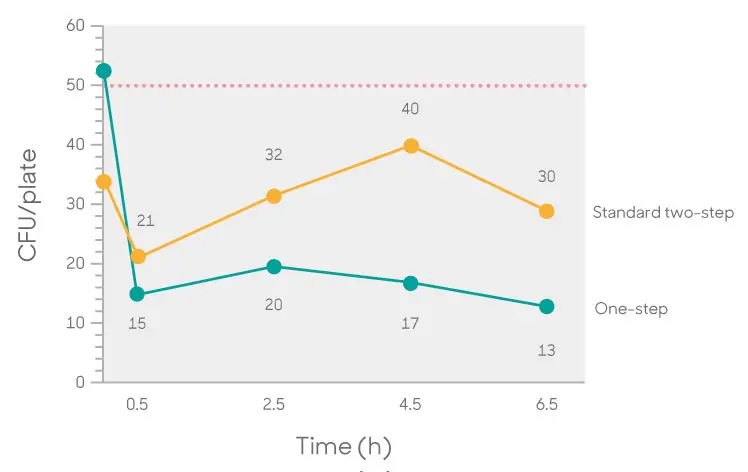Posted
10th December 2019
Research
An Italian study evaluated two different methods of environmental disinfection for high-touch surfaces contaminated with carbapenem-resistant Acinetobacter baumannii. The standard method was a two-step method involving cleaning followed by a disinfection step using a chlorine-based disinfectant. The new method was a one-step process using a pre-impregnated detergent/disinfectant wipes (Gama Universal wipes, as it happens!). The one-step process using the pre-impregnated wipes was more effective, resulting in improved reductions in total viable counts (TVCs), demonstrated residual biocidal activity for up to 7 hours, and was more rapid than the standard method.
A. baumannii is known for its persistence in the environment and for challenges related to disinfection. An Italian hospital had ongoing issues with carbapenem-resistant A. baumannii, and decided to evaluate moving from a two-step cleaning and disinfection process to a one-step process using a pre-impregnated wipe. The study was conducted in a 12-bed ICU, with two bedspaces continuing with the standard method (of an alcohol-based detergent step followed by a chlorine disinfection step), and two bedspaces switching to a one-step pre-impregnated wipe. Sampling of high-touch sites was conducted immediately before and at various time-points after cleaning and disinfection to evaluate initial efficacy and any residual activity. The sampling was mainly restricted to non-electrical items, because the standard method was not suitable for use on most electrical medical devices.The pre-impregnated wipes resulted in a similar level of reduction in TVC, but this reduction was sustained for at least 7 hours, whereas the TVC rebounded in the standard disinfection group. This is not surprising, since the pre-impregnated wipes are quaternary ammonium compound based, which as known residual activity, whereas the standard method was based on chlorine-containing disinfectant, which has no residual activity. Also, hygiene fails were less common in the pre-impregnated wipes arm. Finally, since the pre-impregnated wipes were a one-step method, there is a considerable time saving over a two-step method.Chart showing trends in the CFU count in hospital rooms using two different methods of disinfection

This study highlights the practical advantages of a one-step method, which can be used on all surfaces (including medical devices) over a two-step method, in terms of improved efficacy, residual activity, and time savings.
SHARE THIS ARTICLE
Tags
Latest News
Embracing sustainability and cost savings: The journey of Clinell Indicator Notes to paper-based solutions
At GAMA Healthcare, we’ve always prided ourselves on being at…
Introducing HEXI HUB: A seamless transition in our product line
We’re pleased to announce an update to our product offering…
Innovative solutions for tackling Carbapenemase-producing Enterobacteriaceae (CPE) at King’s College Hospitals
King’s College Hospital NHS Foundation Trust, one of London’s largest…
Gloves Off: reducing unnecessary plastic waste during environmental cleaning and disinfection
In this blog, Dr Phil Norville discusses the momentum-gaining ‘Gloves…




